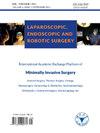Extended-view totally extraperitoneal approach for midline primary and incisional ventral hernia repair: Initial results and experience from a single institution in Vietnam
IF 2
Q3 Medicine
引用次数: 0
Abstract
Objective
Abdominal wall hernias, particularly midline primary and incisional types, represent a common and challenging surgical condition. The extended-view totally extraperitoneal (e-TEP) technique has recently been adapted for ventral hernia repair, offering potential advantages over other approaches. This study aimed to evaluate the initial outcomes and institutional experience of the e-TEP technique for midline primary and incisional ventral hernia repair at a tertiary center in Vietnam.
Methods
This prospective descriptive study was conducted on 65 patients with midline primary or incisional ventral hernias who underwent e-TEP repair between June 2022 and August 2024. All procedures were performed by two experienced surgeons at the Department of General Surgery, Can Tho General Hospital, Vietnam. Follow-up continued until February 2025. Data were collected and analyzed on demographics, clinical characteristics, surgical details, postoperative outcomes, and recurrence.
Results
A total of 65 patients, with a mean age of 57.9 ± 12.6 years, a mean BMI of 25.0 ± 3.3 kg/m2, and 47 (72.3%) female, were included. The types of hernias included primary hernias in 63.1% (41 patients) and incisional hernias in 36.9% (24 patients). Among the incisional hernias, 3 cases were recurrences. The median defect area was 9 cm2 (range, 1–50 cm2). A 15 cm × 15 cm mesh was used in nearly all cases (98.5%). The mean operating time was 131.9 ± 51.8 min, with no conversions to open repair or other procedures, and no intraoperative complications were observed. Nine patients (13%) experienced postoperative complications, with seroma being the most common (5 cases). Two patients sustained intestinal injuries that required reoperation, one developed a wound infection and one reported postoperative skin paresthesia. The mean visual analogue scale pain scores at postoperative 24 hours, 48 hours, and at discharge were 4.3 ± 1.3, 3.0 ± 1.5, and 1.0 ± 0.4, respectively. The mean postoperative hospital stay was 4.52 ± 2.24 d. Only one case of recurrence (1.5%) was observed, and no patient reported chronic pain during the mean follow-up period of 14.5 ± 7.6 m.
Conclusion
The e-TEP technique for midline primary and incisional ventral hernia repair is a feasible and safe option when performed by experienced surgeons. It offers a low rate of complications, short hospital stay, and minimal recurrence rates. This technique can be considered a viable alternative for the management of midline ventral hernias, with promising short-term outcomes.
扩展视点完全腹膜外入路用于中线原发性和切口腹疝修补:来自越南一家机构的初步结果和经验
腹壁疝,特别是中线原发性和切口型腹壁疝,是一种常见且具有挑战性的手术条件。全腹膜外扩视野(e-TEP)技术最近被应用于腹疝修补,与其他入路相比具有潜在的优势。本研究旨在评估e-TEP技术在越南三级中心中线原发性和切口腹疝修复中的初步结果和机构经验。方法本前瞻性描述性研究对2022年6月至2024年8月期间接受e-TEP修复的65例中线原发性或切口腹疝患者进行了研究。所有手术均由越南芹苴总医院普通外科的两名经验丰富的外科医生进行。后续行动一直持续到2025年2月。收集和分析人口统计学、临床特征、手术细节、术后结果和复发的数据。结果共纳入65例患者,平均年龄57.9±12.6岁,平均BMI为25.0±3.3 kg/m2,女性47例(72.3%)。疝类型包括原发性疝41例(63.1%)和切口疝24例(36.9%)。切口疝中复发3例。中位缺损面积为9 cm2(范围1-50 cm2)。几乎所有病例(98.5%)均使用15cm × 15cm补片。平均手术时间131.9±51.8 min,无中转开腹修复等手术,无术中并发症。术后出现并发症9例(13%),以血清肿最为常见(5例)。两名患者持续肠道损伤,需要再次手术,一名出现伤口感染,一名报告术后皮肤感觉异常。术后24小时、48小时和出院时视觉模拟评分的平均疼痛评分分别为4.3±1.3、3.0±1.5和1.0±0.4。术后平均住院时间为4.52±2.24 d,仅有1例复发(1.5%),平均随访时间为14.5±7.6 m,无患者报告慢性疼痛。结论在经验丰富的外科医生的指导下,e-TEP技术用于中线原发性和切口腹疝修补是一种安全可行的选择。它的并发症发生率低,住院时间短,复发率低。该技术可被认为是治疗中线腹疝的可行替代方法,具有良好的短期效果。
本文章由计算机程序翻译,如有差异,请以英文原文为准。
求助全文
约1分钟内获得全文
求助全文
来源期刊

Laparoscopic Endoscopic and Robotic Surgery
minimally invasive surgery-
CiteScore
1.40
自引率
0.00%
发文量
32
期刊介绍:
Laparoscopic, Endoscopic and Robotic Surgery aims to provide an academic exchange platform for minimally invasive surgery at an international level. We seek out and publish the excellent original articles, reviews and editorials as well as exciting new techniques to promote the academic development.
Topics of interests include, but are not limited to:
▪ Minimally invasive clinical research mainly in General Surgery, Thoracic Surgery, Urology, Neurosurgery, Gynecology & Obstetrics, Gastroenterology, Orthopedics, Colorectal Surgery, Otolaryngology, etc.;
▪ Basic research in minimally invasive surgery;
▪ Research of techniques and equipments in minimally invasive surgery, and application of laparoscopy, endoscopy, robot and medical imaging;
▪ Development of medical education in minimally invasive surgery.
 求助内容:
求助内容: 应助结果提醒方式:
应助结果提醒方式:


